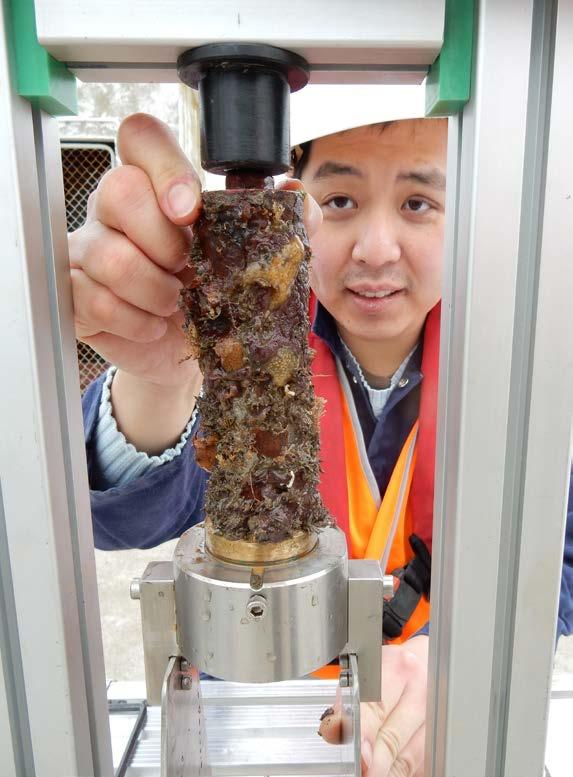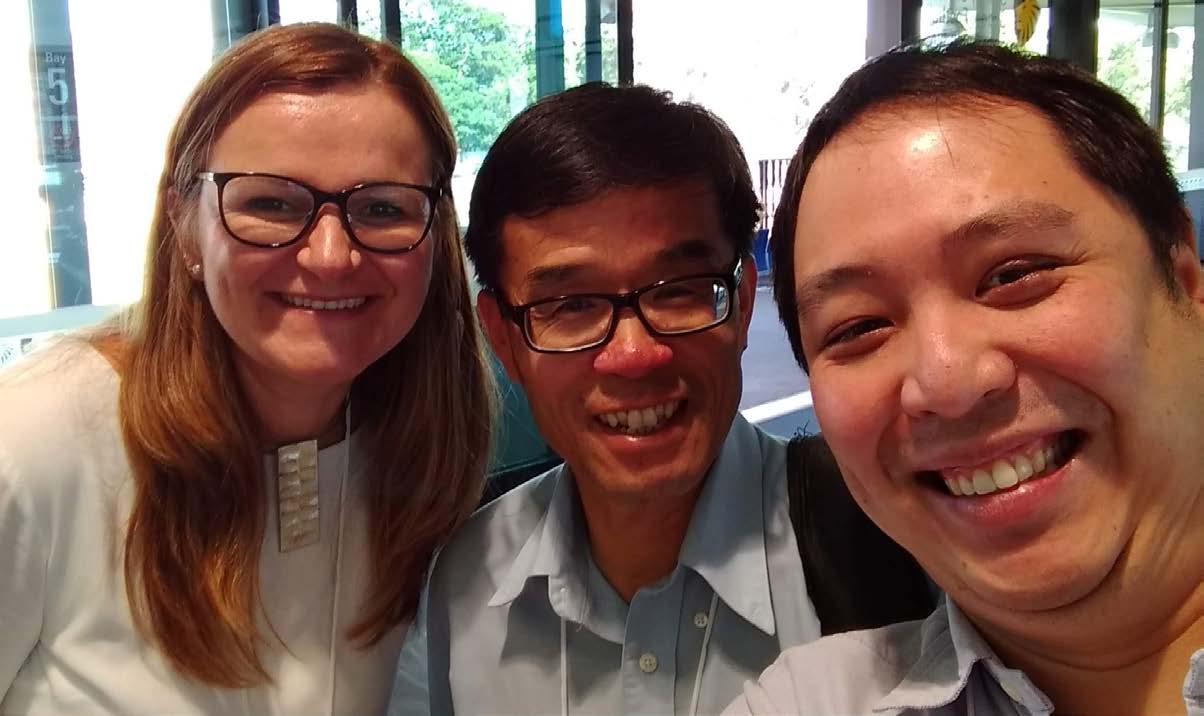
5 minute read
CMatP Profile: Dr Andrew Ang PhD, CMatP, MIEAus
Where do you work? Describe your job.
I am a Senior Research Engineer at Swinburne University of Technology. In this role, I lead a diverse research team focused on the topics of surface engineering and materials science, with a particular focus on the subject of thermal spray coatings and thin films.
What inspired you to choose a career in materials science and engineering?
Prior to coming to Australia, I completed my undergraduate degree at the National University of Singapore. It was during the third year of my course that I had an opportunity to complete an internship at ST Land System (then called Singapore Technology Kinetics)—a defence engineering contractor. Whilst undertaking this internship, I came to understand the importance of engineering materials. I was involved in some of the most impressive projects that an undergraduate could ever imagine — from looking at thermite reactions (which generate huge amounts of heat), to the development of new materials for ballistic protection (including their destruction). It is fair to say the experience ‘ignited’ my interest in materials science and engineering and, better still, ST Land System offered me a job at the end of my internship.
Who or what has influenced you most professionally?
This is a tough question because I have been lucky to work with so many wonderful people. However, two people really stand out. The first person is Associate Professor Philip Cheang (aka Doc Phil), who sadly passed away a couple of years ago. Doc Phil taught me about biomaterials and we worked on cold spray biocoatings. Even though, at the time, he was the Head of School at SIM University, Doc Phil always had time to have coffee; his enthusiasm and passion for research excellence was contagious. The second person is my PhD supervisor, and now colleague, Professor Christopher Berndt, who has tirelessly mentored many young budding engineers in the field of thermal spray. For those that know Chris well, he embodies the most generous spirit and has the tenacity to lead pioneering research into coatings and materials.
What has been the most challenging project you’ve worked on to date and why?
I am currently one of the chief investigators at the ARC Training Centre: Surface Engineering for Advanced Materials (SEAM), which consists of 12 industry partners, two national labs (ANSTO and CSIRO), and three universities. Indeed, a large team of people working together. There are multi-projects within SEAM involving various stakeholders, many of which are working to address the critical manufacturing needs of an ever-changing global and Australian economy. The greatest challenge is to fulfil the industry research objectives, while simultaneously upskilling or re-skilling the workforce so that it is able to work with the new technology. Such an endeavour will require significant time and effort, but I believe the research impact will be wide reaching and worthwhile.
What does being a CMatP mean to you?
Working in the field of material science and engineering, I believe it is a privilege to be recognised by my peers as a CMatP. Professionally, it has given me the opportunity to be involved in standards committees, and widen my professional network with others.
What gives you the most satisfaction at work?
Apart from working with my team of awesome researchers, I get most satisfaction from our applied research that has solved challenging engineering problems for our industry partners. Thermal sprayed coatings, developed in partnership with our labs, are now found in many essential applications in Australia,

Andrew can deposit various types of coatings via plasma spraying (20,000°C plasma flame jet). Follow his research @ASMcoatings on Twitter.
Together with his industry partners Andrew tackles practical issues of biofouling and corrosion.

from better wear resistant coatings for power generation (such as power stations) and new anti-corrosion coatings for naval vessels, right through to thermal barrier coatings for automotive components. There are many more ongoing coating projects that we hope can exit the SEAM labs and become actual applications.
What is the best piece of advice you have ever received?
During my final year project, I was fortunate to be mentored by Professor Seh Chun Lim (currently interim Provost of Singapore University of Science and Technology). I was an impatient student, and in the field of tribology you just cannot rush. Professor Lim had these golden words for me, that I remember to this day: “More haste, less speed.” In fact, I often pass on this simple advice to all my students, to remind them to be diligent and not rush things.
What are you optimistic about?
I am currently very intrigued by the topic of high entropy materials (both metals and ceramics types). This unique class of materials has properties that exceed our conventional alloyed materials. At SEAM lab, we are keen to assist in this technological leap, and are working with metallurgical experts, such as Professor Paul Munroe and Professor BS Murty, on various aspects. It would be great to see some of these materials commercially applied as protective coatings in the near future.
What have been your greatest professional and personal achievements?
I have been a member of the past two Combined Australian Materials Conferences (CAMS2016 and CAMS2018) organising committees. Each of these conferences has been highly successful, attracting over 300 attendees. Coorganised by Materials Australia and the Australian Ceramic Society, the event brings together the best and brightest minds in the field of material science and engineering in the Australasian region. Currently, I have the privilege to co-chair the upcoming CAMS2021 conference with Professor Xinhua Wu from Monash University. We had to make the tough decision to move the 2020 event to 2021 due to the COVID-19 pandemic. Nonetheless, it will be a fine achievement to have been involved in a ‘hat trick’ of successful CAMS events. Please consider joining us at CAMS2021. Visit www. cams2021.com.au for more information or feel free to contact me at aang@swin. edu.au.
What are the top three things on your ‘bucket list’?
This is going to sound geeky, but here it goes: (1) Take a SpaceX rocket ride (2) Drive a submersible vessel (3) Drive around the Monza race track in a Ferrari 488 with the carbon fibre wheel package PS. All of the activities above have coated components in them. Surface engineering—we cover it all.


ABOVE: Fellow CMatP Dr Anna Paradowska and Dr Wyman Zhuang with Andrew. BELOW: Andrew with metallurgy expert George Vander Voort.










